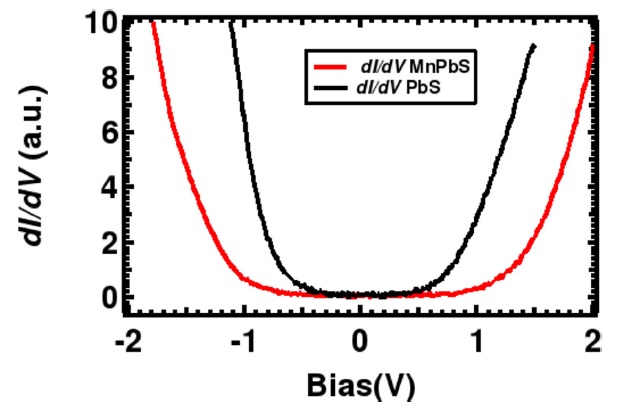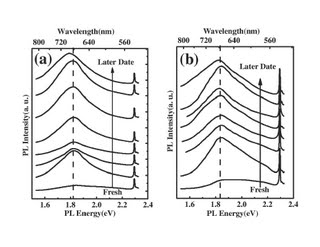
|
Mn Dopint Effects in PbS Quantum Dots for Applications in Quantum Dot Sensitized Solar CellsSolar cell applications have been thought as one of the major renewable energy resources in the future. Many types of solar cell materials have been studied to achieve the goals of large scale utilization. Among them, quantum dot sensitized solar cells (QDSSCs) are one of the most applicable cells. To further increase the efficiency of the QDSSCs, methods to extend the lifetime of the short lived excitons created in the QDs are the key. Here, we studied the magnetic element, Mn, doping effects into the semiconducting PbS QDs on the QDSSC applications. In this work, the Mn doped PbS QDs were deposited onto Zn2SnO4 (ZTO) nanowires (NWs), which are served as semiconducting electrodes to cllect the electrons injected from the QDs. It is found that the Mn doping widened the energy band gaps in PbS QDs, and most importantly, the Mn element on the surfaces of PbS QDs in contact with ZTO NWs lowered the energy barrier for electron injection from PbS QDs to the ZTO NWs. Due to the presence of the interfacial Mn atoms, the incident photon-to-current efficiency (IPCE) increased up to 700 % (with an average 300 % enhancement). This discovered enhancement mechanism may be a new way of engineering QDSSCs for further improvements. Read more: G. Rimal et al., Appl. Phys. Lett. 109, 103901 (2016). |

|
Photoluminescence of Nano-Crystalline Si Enclosed in Oxidized ShellSilicon (Si) is one of the most studied material and widely used in semiconductor industry due to its unique properties. The indirect band gap of Si has limited it to the devices manipulating electrons only, but not the photons - the exiton recombination efficiency is low. Recent studies showed that the efficiency of the light emission due to exiton recombination could be dramatically enhanced in nano-scaled Si. Possible mechanisms of the enhancement have been proposed and could be sorted into (1) quantum confinement for exitons in the nano particles; (2) the recombination centers located at the interfaces. In our lab, we synthesized different sizes of Si Quantum Dots (QDs) and characterize its photoluminescence (PL) signal as function of the time aged after exposed to air. We conclude that, in our Si QDs, the recombination centers at interfaces between the nano-crystalline Si core and the oxidized shell is responsible the enhanced exiton recombination process. Read more: (1) TeYu Chien et al., Chinese J. Phys. 46, 91 (2008); (2) TeYu Chien et al., Int. J. Nanosci. 2, 357 (2003). |

